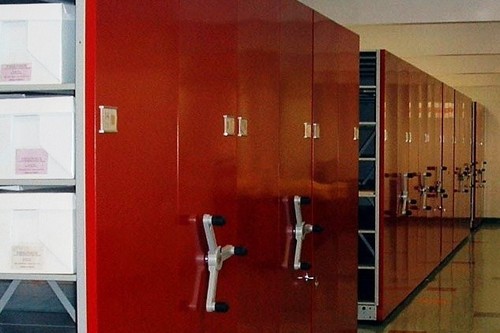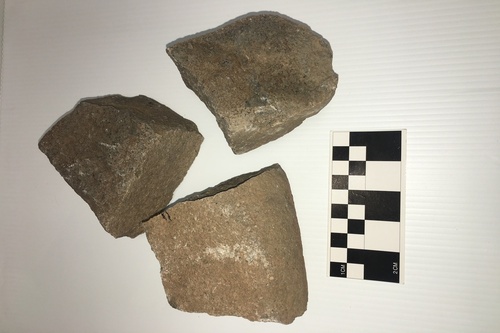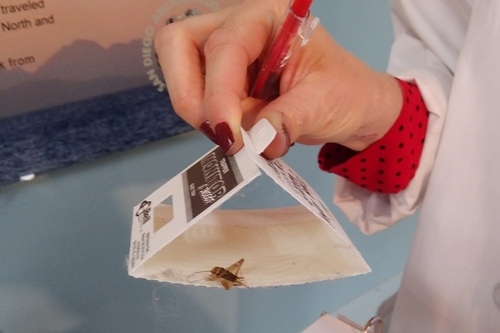
From Inside the Vaults: Preventative Conservation
From Inside the Vaults is a monthly blog that gives insight into best practices for collections stewardship, curation, and archaeological collecting institutions.
What is Preventative Conservation for Museum Collections?
Over the past few months, we have looked at different best practices used by Collections Managers to protect and preserve museum collections. Damage from deterioration of prehistoric and historic collections cannot be completely stopped, only slowed down if proper preventative conservation methods are in place. Preventative conservation is an overarching term that includes practices such as Integrated Pest Management (IPM), Museum Housekeeping and Gallery Maintenance, as well as ongoing collections inventories. With careful handling, proper storage and artifact monitoring, and controlled environmental conditions, the physical deterioration of artifacts can be mitigated by collections stewards.
Pest Management
Keeping pests out of Museum collections is a necessary piece of preventative conservation. Collections staff follow the Center’s Integrated Pest Management Plan (IPM) to ensure that there are no signs of damaging pests throughout collections spaces. Weekly monitoring of the Center and pest traps helps to keep collections free of pests, preventing the need for remediation of an infestation.
Housekeeping and Gallery Maintenance
Housekeeping and Gallery Maintenance protocols are preventative measures taken to ensure that damage to collections overtime is minimized. Dirt and dust contribute to the deterioration of artifacts and unclean spaces naturally attract pests. Adhering to the Center’s housekeeping plan provides preventative care for artifacts and their storage spaces.
Collections Inventory
When completing collections inventories, Collections Managers are in a unique position to gain accurate, real-time data on artifact conditions. Condition reporting can track deterioration, and also note any conservation treatments that artifacts have had previously or need to undergo in the future. Photographing artifacts, and detailing the artifact’s condition are preventative measures that, if taken, can alert collections stewards before a problem (for example: mold) spreads to other artifacts or, becomes too large to mitigate.
Monitoring Temperature and Humidity Levels
In addition to these best practices, monitoring temperature and humidity levels in collections spaces and places where artifacts are housed is an incredibly important part of preventative conservation. There are standards in place for a “norm” of collections environment temperatures and humidity levels, but because all collections are not created equally, it is good to be flexible based upon the types of collections that are being preserved. For archaeological collections, this flexibility is necessary because there are often many different types of materials collected together. Following the National Park Services Museum Handbook guidelines, the Center organize collections by site and material class. Based on these NPS guidelines, there are three categories the collections lab considers when organizing collections: Artifacts that are considered negligibly climate-sensitive materials, those that are climate-sensitive materials, and significantly climate-sensitive materials. Much of the Center’s artifacts falls under the first two categories, many of them negligibly climate-sensitive, and are relatively easy to maintain. Artifacts that are significantly climate-sensitive require additional monitoring and care based on their material. Each collections vault in the Center is equipped with individual temperature and humidity controls, and is monitored by Center staff each day. By keeping the relative humidity in these spaces above 30% and below 65%, and temperatures between 50-75 degrees Fahrenheit, collections can remain stable and the rate of deterioration is slowed. If humidity levels rise above 65%, mold and other deterioration dangers may become problematic. Additionally, the higher temperatures rise, the faster deterioration of artifacts will occur. Temperatures and relative humidity of the vaults and Museum galleries are recorded and monitored daily and by capturing this data, the collections department is able to analyze and mitigate any problems caused by fluctuations or increases.
Conclusion
Constant monitoring of collections conditions is necessary for preventative conservation to be a success. Data analysis provides collections department staff with the ability to predict and resolve conservation problems before they arise. By following these best practices, collections will undergo less stress overall and deterioration can be slowed so that artifacts are available for generations to come.
By Jessica McPheters, Collections Manager




